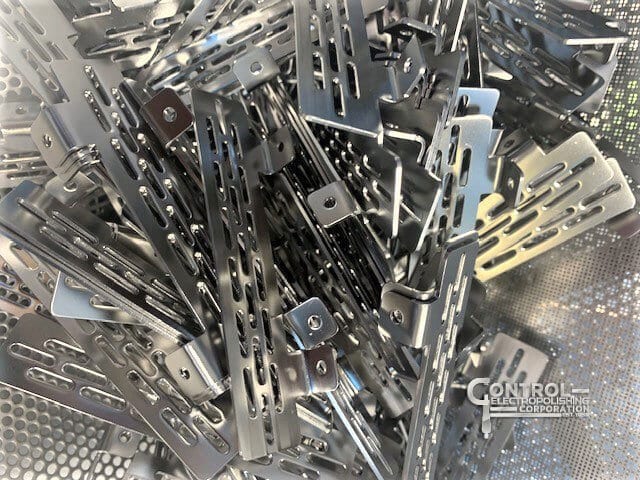
At Control Electropolishing, we offer a wide array of services designed to achieve the beautifully sleek and smooth finish that you’re looking for in your metal parts. These services include electropolishing, pickling, and passivation – each process delivers a unique and flawless result. The type of service performed varies by project and depends on the […]
At Control Electropolishing, we offer a wide array of services designed to achieve the beautifully sleek and smooth finish that you’re looking for in your metal parts. These services include electropolishing, pickling, and passivation – each process delivers a unique and flawless result.
The type of service performed varies by project and depends on the type of metal being finished. Choosing the right service for your part is crucial in achieving the desired look and feel of your metal part.
Electropolishing
Also known as electrochemical polishing or electrolytic polishing (especial in the metallography field), electropolishing is an electrochemical process that removes unwanted material from a metallic workpiece, used to polish, passivate, and deburr metal parts. Often described as the reverse process to electroplating, electropolishing may be used in lieu of abrasive fine polishing in microstructural preparation.
The process can accommodate many different products and can be used on most types of stainless steel and other alloys, as well, and our 10-feet long, four-feet deep electrochemical tanks can handle a wide variety of sizes and shapes.
Passivation
Passivation is the process of by which a material is made “passive” in relation to another material prior to using the two together in a final product. A chemical combination of nitric acid and peroxide oxidize removes impurities and leaves a consistently improved surface behind.
By the end of the process, the finished metal becomes less affected by the environment and other external forces with future use.
Pickling
Pickling is the chemical removal of any high temperature scale and any adjacent low chromium layers of metal from the surface of stainless steel.
The pickling process aims to remove the scale and underlying chromium depleted layer in order to restore the corrosion resistance of the material while also removing contaminants such as ferrous and ferric oxide particles. After processing, the metal parts are rinsed in a deionized water tank to accelerate the drying process and leave a clean and passive surface that is free of stains and fingerprints.
Why It Matters
Electropolishing
In addition to its versatility, the electropolishing process has many other benefits, including chromium resistance, bacterial surface resistance, improved sterilization, a chemically bonded corrosion resistant oxide layer, and no need for multiple finishing operations.
Passivation
Some of the benefits of the passivation process include an improved surface layer finish, the option of copper sulfate testing, and conformation to QQ-P-35 industry standards.
Pickling
A significant benefit of the pickling process and chemical treatment of metals in general is the versality of the treatment options: either nitric or citric acid can be used, depending upon the part and your specific needs.
Call us today to explore which of our services is right for you and your project!